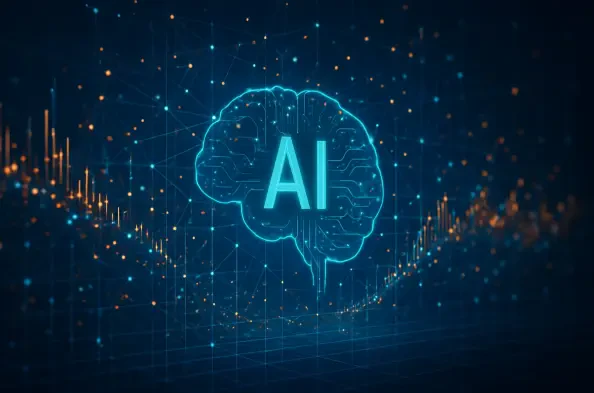Vernon Yai is a renowned data protection expert with a deep focus on privacy protection and data governance. With years of experience in risk management and pioneering innovative detection and prevention techniques, Vernon has become a trusted thought leader in safeguarding sensitive information. In this insightful conversation, we explore how businesses can redefine resilience in the AI era, drawing parallels between ancient practices and modern strategies, understanding the growing divide in organizational performance, leveraging technology for reinvention, adapting to AI-driven consumer trends, and balancing investments in people and tech.
How do you define resilience for businesses in today’s fast-paced, AI-driven world?
Resilience in today’s AI-driven world is about more than just surviving disruptions—it’s about thriving through them. I see it as the ability of a business to anticipate change, adapt swiftly, and emerge stronger, much like how natural systems evolve under pressure. With AI technologies advancing at a breakneck pace, resilience means embedding flexibility into every layer of an organization, from operations to strategy, so that when shocks hit, they’re not just absorbed but turned into opportunities for growth.
What inspired you to connect the Japanese art of kintsugi with building resilience in organizations?
Kintsugi, the art of repairing broken pottery with gold, struck me as a powerful metaphor for business resilience. In kintsugi, cracks aren’t hidden; they’re celebrated as part of the object’s history and beauty. I realized that organizations can adopt a similar mindset—disruptions and failures are inevitable, but instead of masking them, we can use them as moments to rebuild stronger. This perspective encourages leaders to view challenges not as setbacks but as chances to innovate and reinforce their foundations.
Why do you think so few technology leaders feel prepared to handle the rapid changes brought by AI?
Many CIOs and CTOs—only about a third feel ready—struggle because the pace of AI innovation is outstripping their ability to integrate it strategically. The challenge isn’t just technical; it’s cultural and structural. AI isn’t a plug-and-play solution; it requires rethinking business models, upskilling teams, and aligning tech with long-term goals. Without that holistic approach, leaders feel overwhelmed by the constant need to pivot, especially when resources and readiness are uneven across their organizations.
What do you believe is driving the widening performance gap between strong and weak organizations?
The growing divide—about 17 percentage points in recent studies—comes down to mindset and execution. Strong organizations treat disruption as a catalyst for differentiation; they invest in scalable tech and empower their people to adapt. Weaker ones cling to outdated models, reacting to change rather than anticipating it. This gap widens because resilience isn’t just about resources—it’s about a willingness to reinvent, which many struggling companies lack due to inertia or short-term focus.
How do high-performing companies turn disruptions into opportunities compared to others?
High performers see disruptions as a chance to leap ahead. They integrate AI and data into their core operations to drive faster decision-making and innovation, often achieving revenue growth and profit margins well above their peers. Struggling companies, on the other hand, often view disruptions as crises to endure, focusing on damage control rather than transformation. The difference lies in proactive investment and a culture that embraces change rather than resists it.
What’s fueling the urgency for so many executives to increase AI investments right now?
The urgency stems from a recognition that AI is no longer a future trend—it’s a present necessity. With nearly 90% of C-suite leaders planning to boost AI budgets, they see it as a driver for revenue and efficiency in a hyper-competitive landscape. Consumer expectations are shifting fast, costs are rising, and those who don’t adopt AI risk falling behind. It’s about staying relevant and seizing the potential to redefine entire industries through intelligent systems.
How can technology leaders move beyond small AI pilots to create scalable solutions for growth?
Moving from pilots to scalable AI solutions requires a shift in focus from experimentation to integration. CIOs need to align AI initiatives with core business goals, ensuring they solve real problems at scale. This means building robust data and cloud foundations, fostering cross-functional collaboration, and prioritizing use cases with measurable impact. It’s also about securing buy-in from leadership to allocate resources for long-term deployment rather than short-term tests.
With consumer behavior shifting toward AI tools, how should businesses rethink customer engagement?
With three-quarters of consumers open to AI-powered shopping tools, businesses need to prioritize personalization and trust in their engagement strategies. This means using AI to understand individual preferences and deliver tailored experiences, whether through product recommendations or customer service. But it’s not just about tech—it’s about ensuring transparency so consumers feel confident their data is safe. Engagement today is about blending innovation with empathy to build lasting relationships.
Why do you think leaders often prioritize tech investments over talent development, despite both being critical?
Many leaders prioritize tech because the results are often more tangible and immediate—new systems can show quick wins in efficiency or cost savings. Talent development, while equally vital, feels like a longer play with less predictable outcomes. There’s also a perception that tech can ‘solve’ problems on its own, which overlooks the reality that without skilled, adaptable people, even the best AI tools underperform. It’s a mindset shift that’s needed to balance the two.
What is your forecast for the role of AI in building organizational resilience over the next decade?
Over the next decade, I believe AI will become the backbone of organizational resilience. It will evolve from a tool for efficiency to a strategic enabler of adaptability, helping businesses predict disruptions, optimize operations, and personalize customer interactions at an unprecedented scale. But its success will hinge on how well companies integrate it with human talent and ethical practices. Those who master this balance will not only survive volatility but redefine their industries, turning every challenge into a stepping stone for growth.






